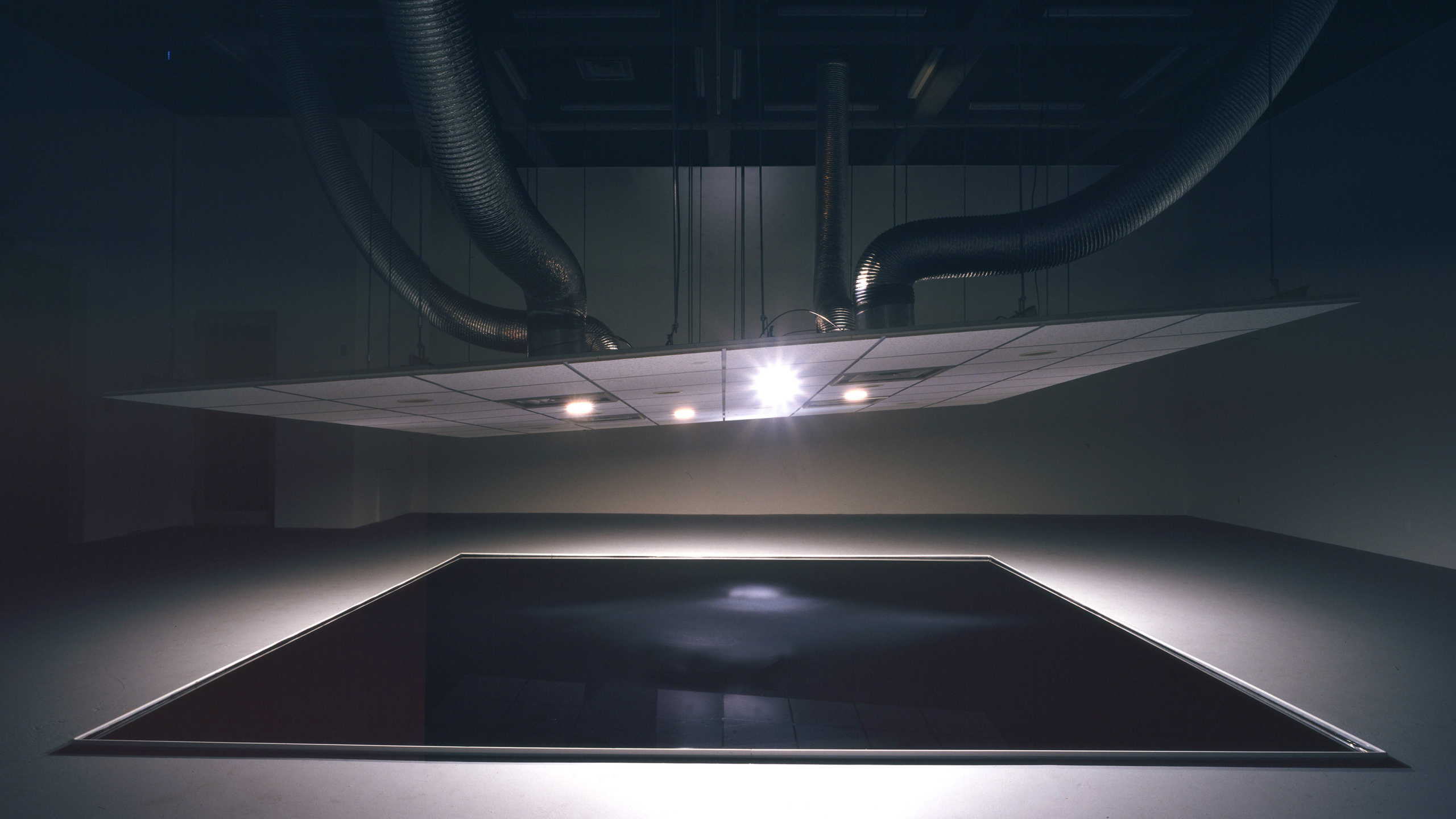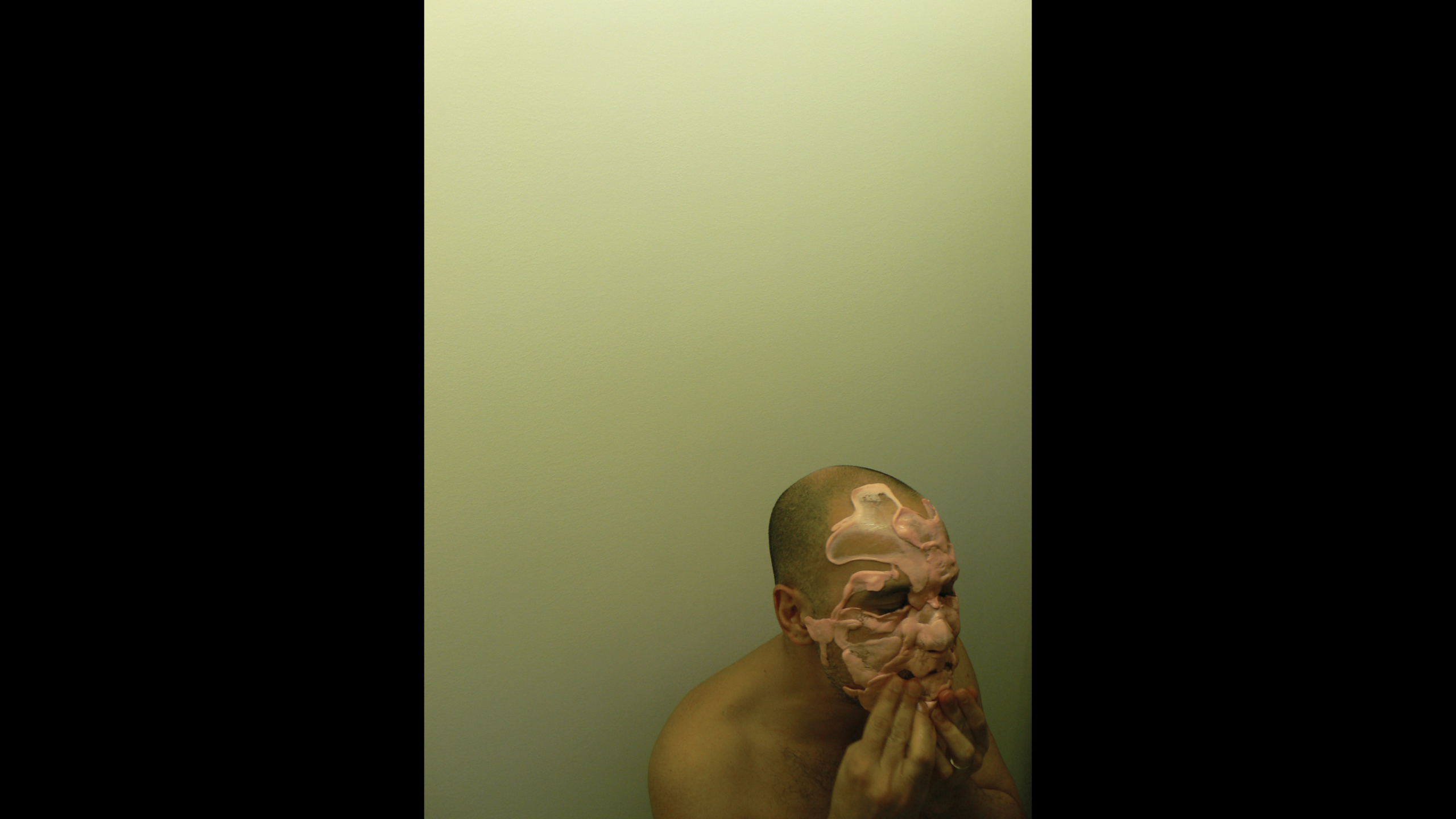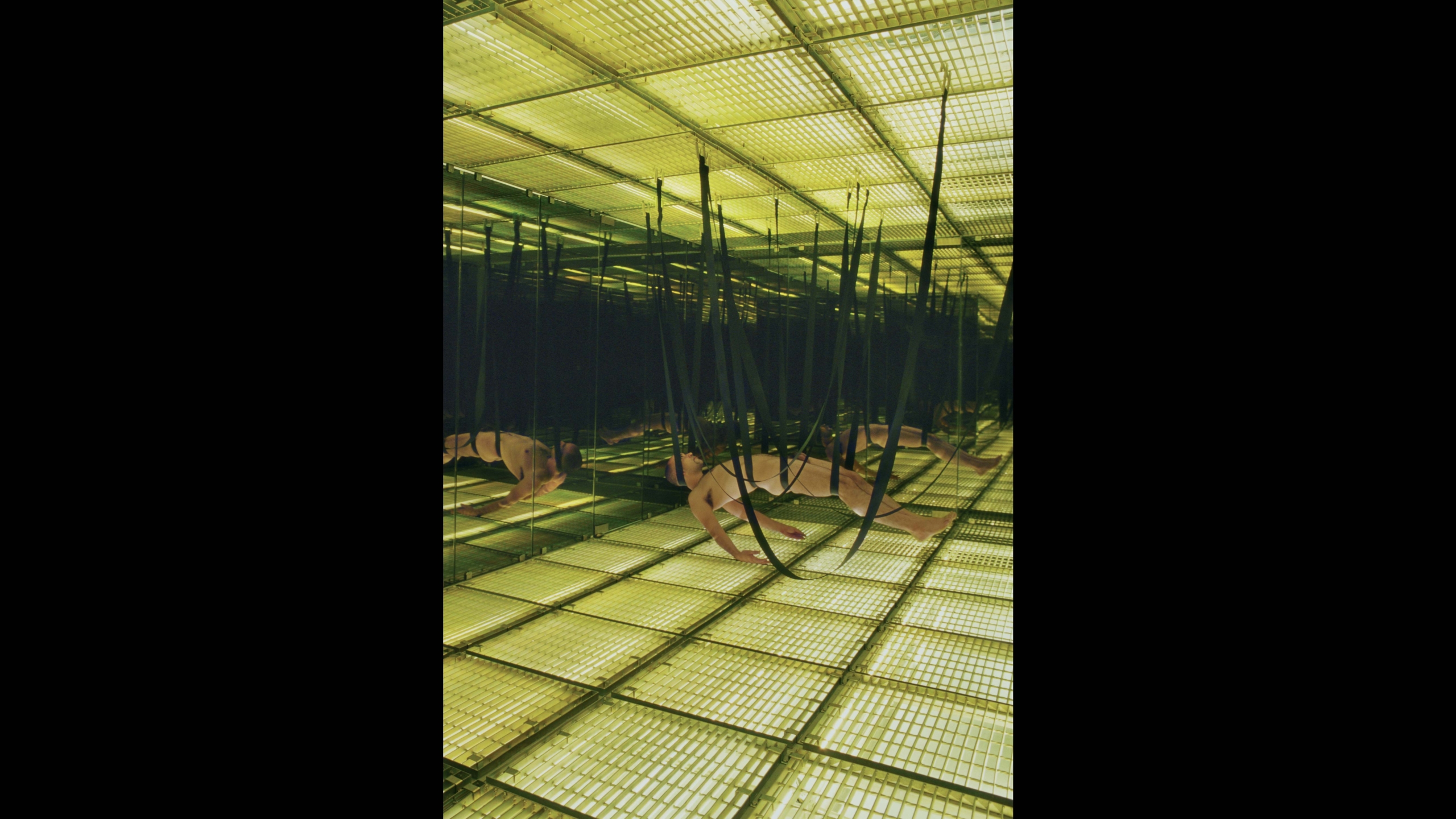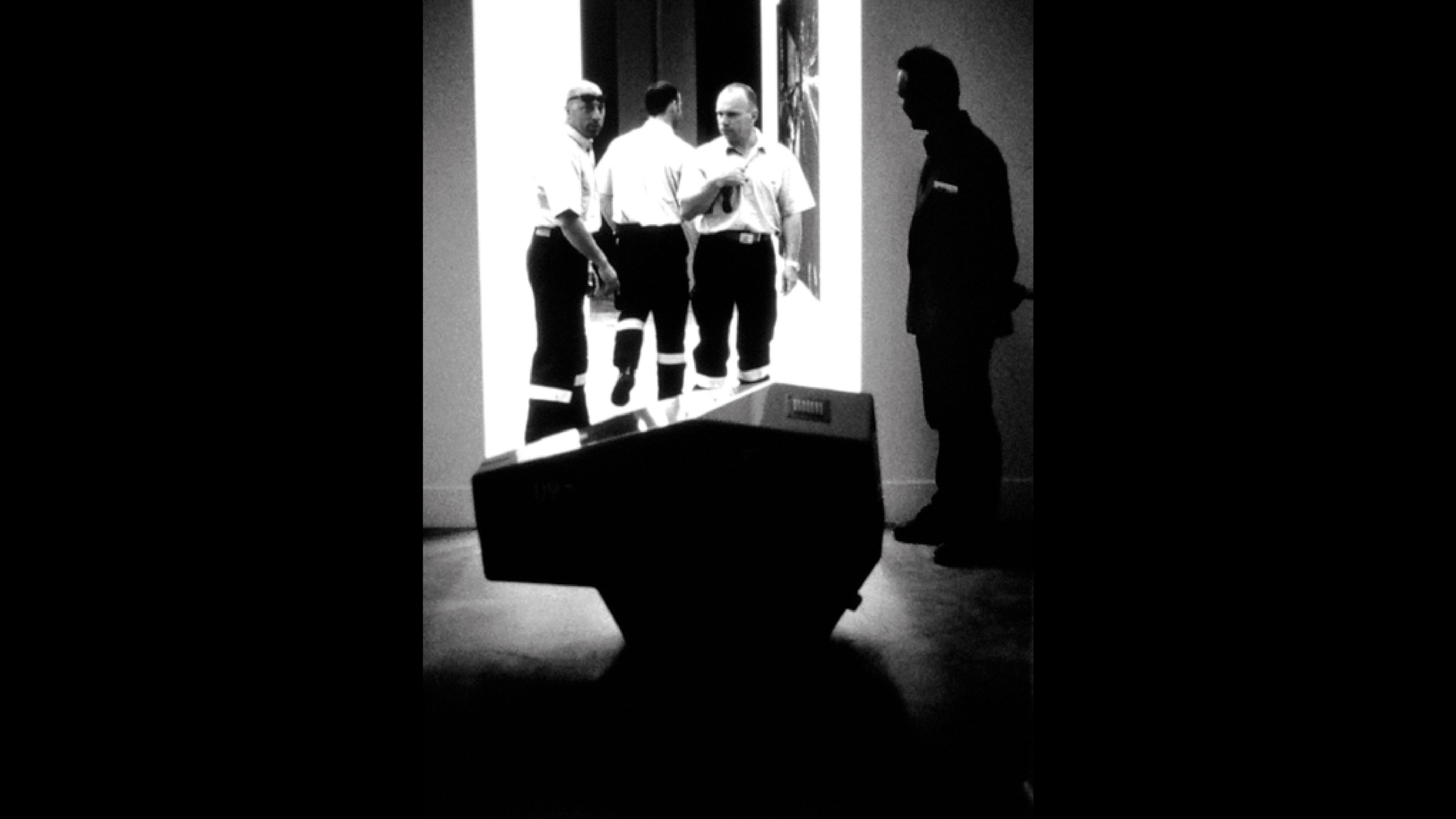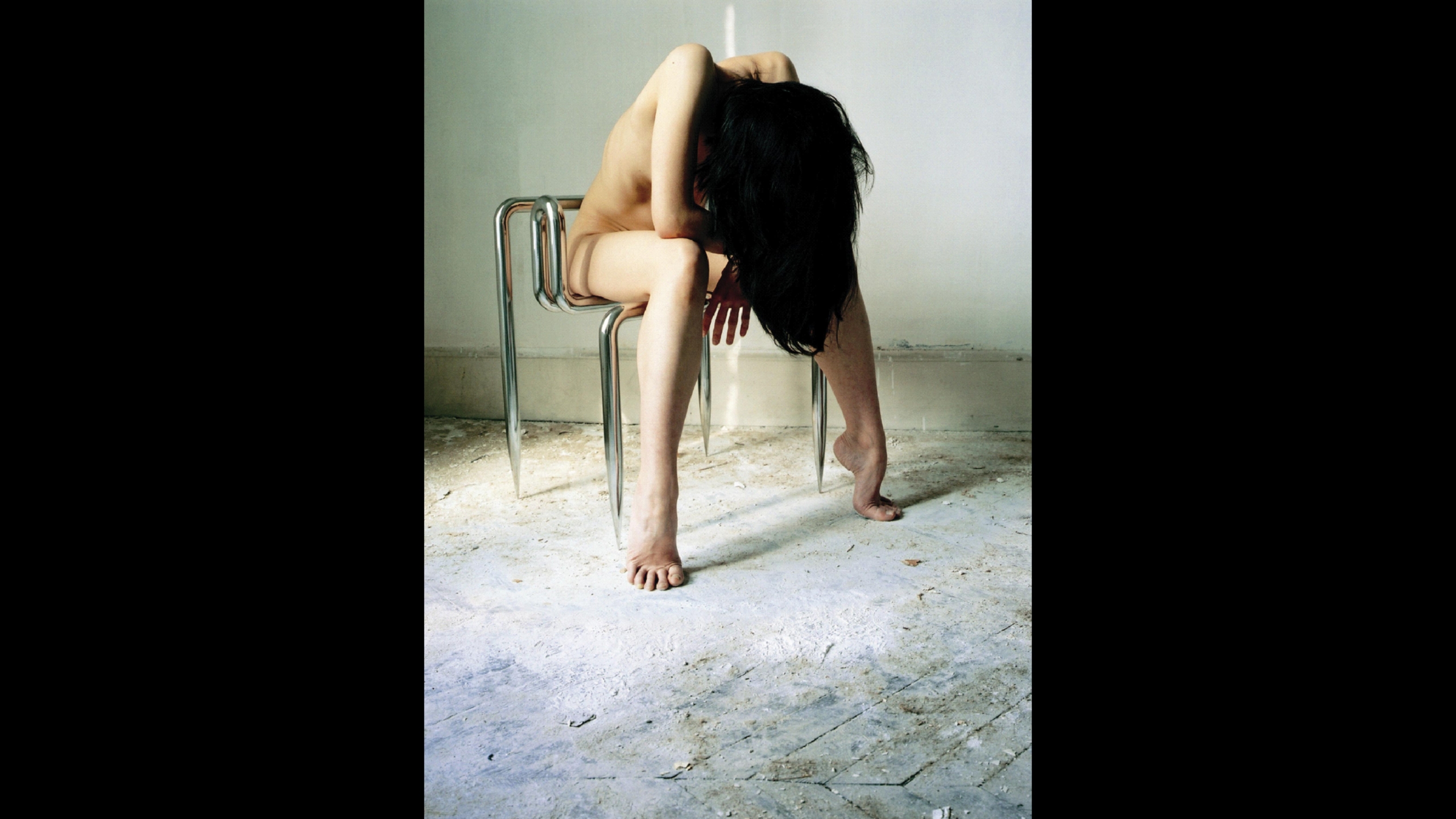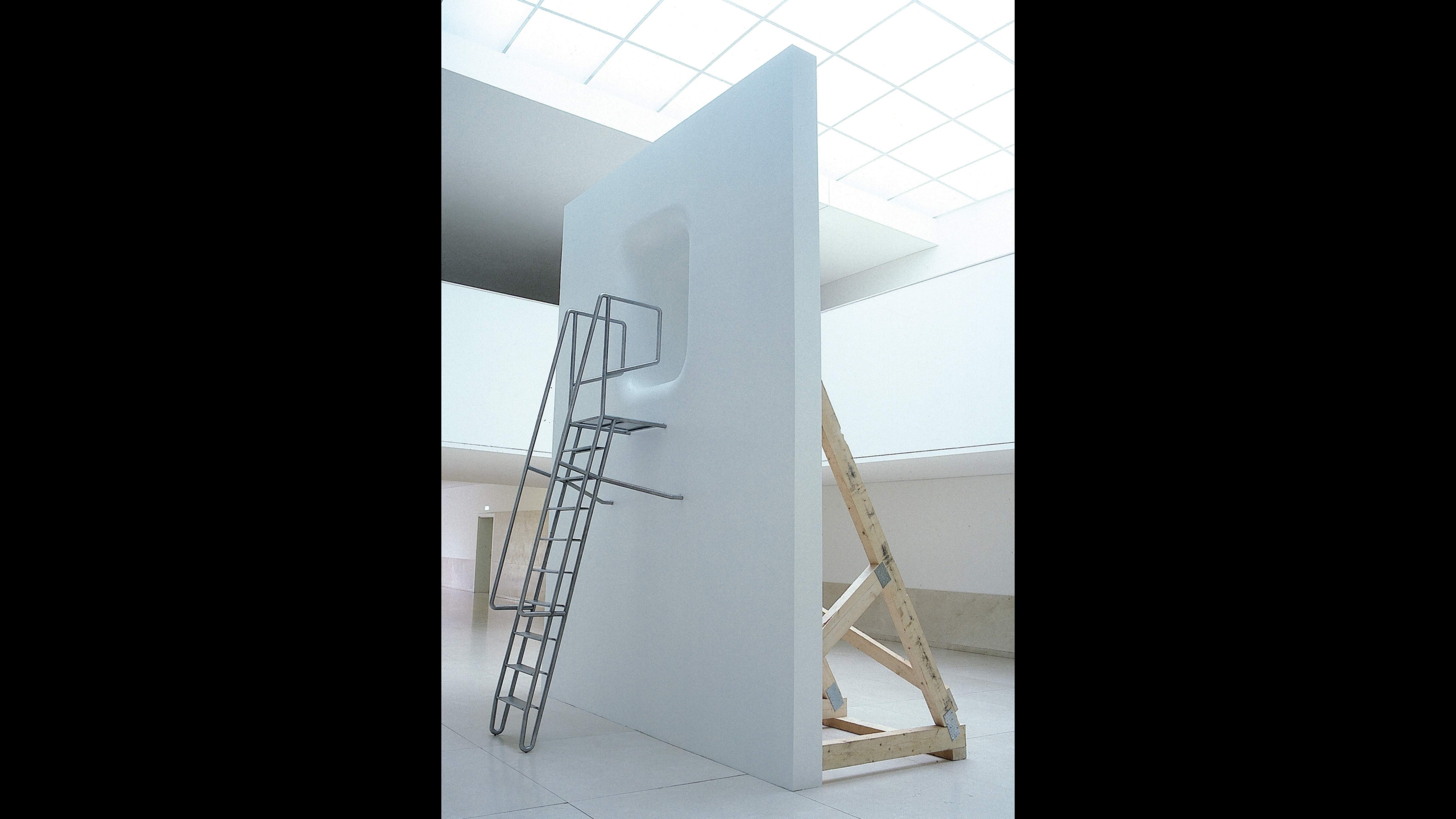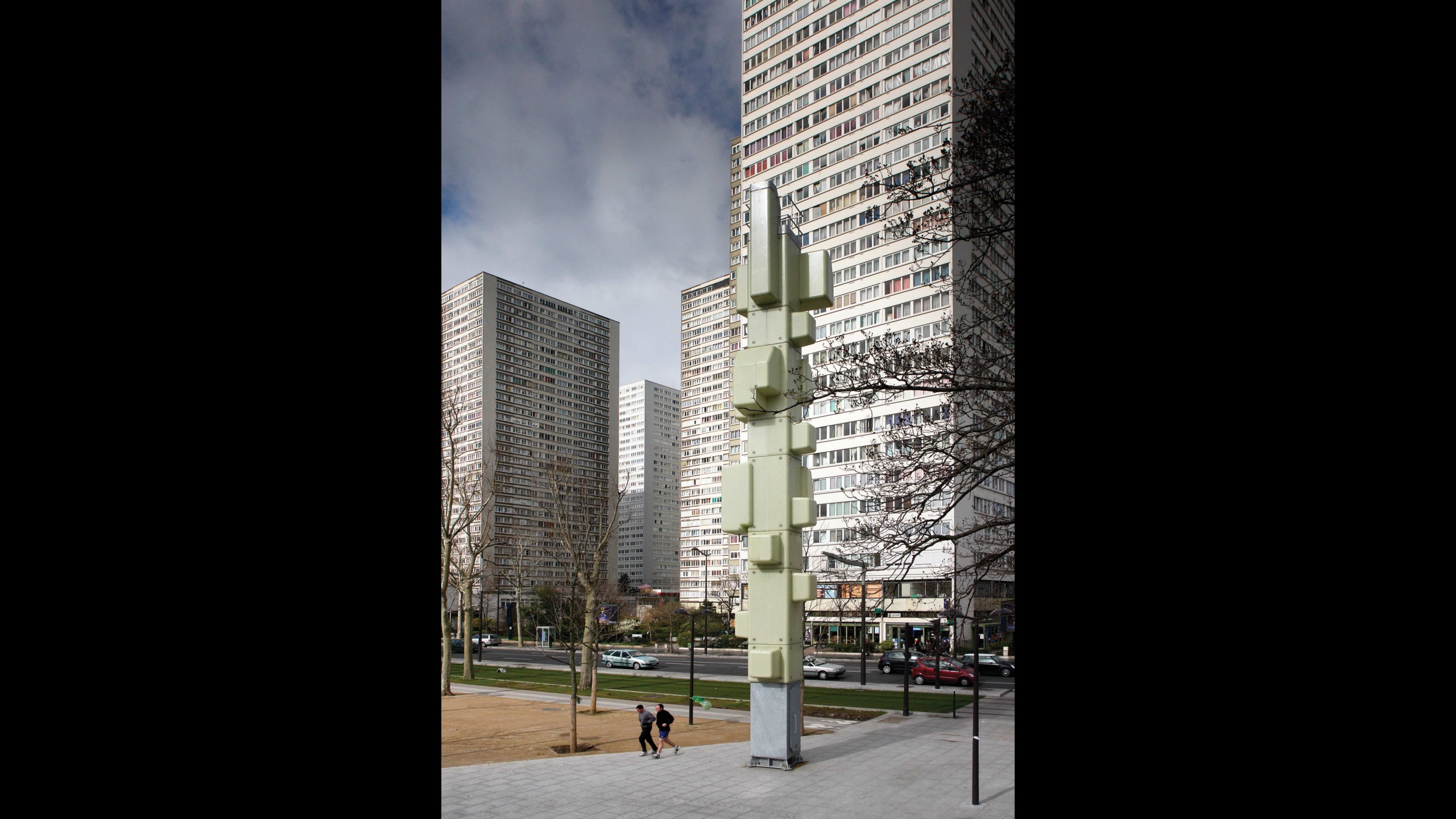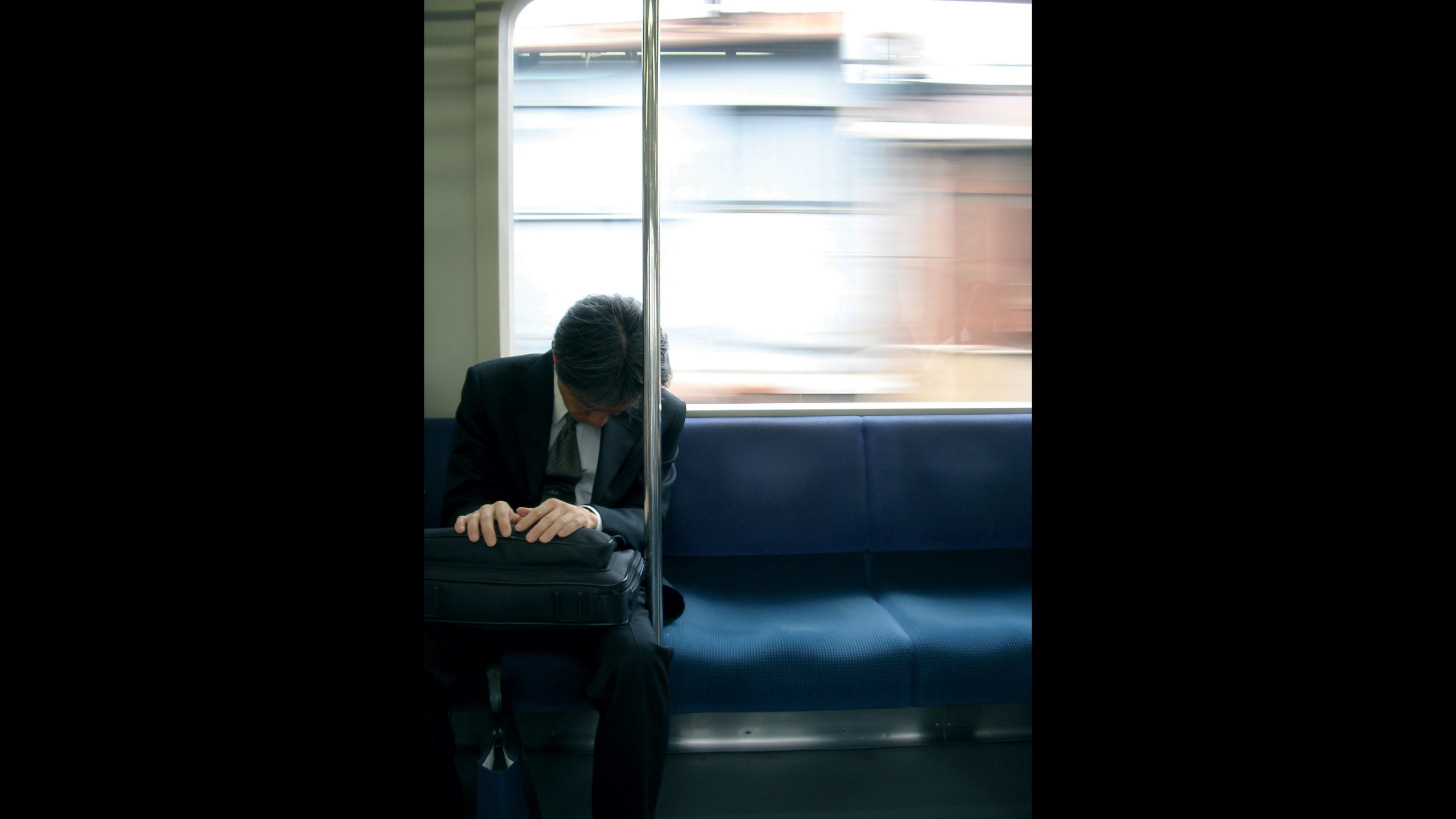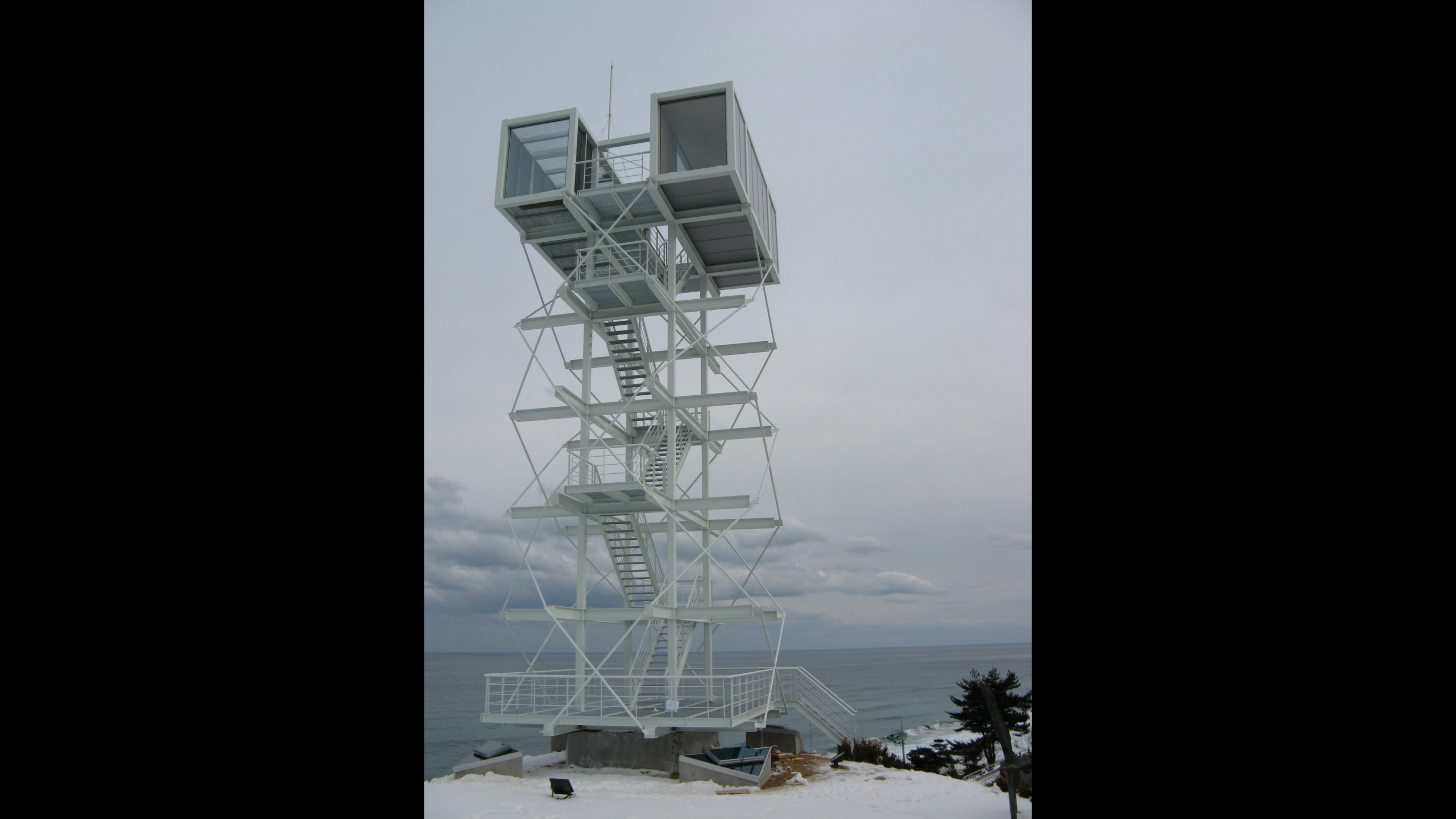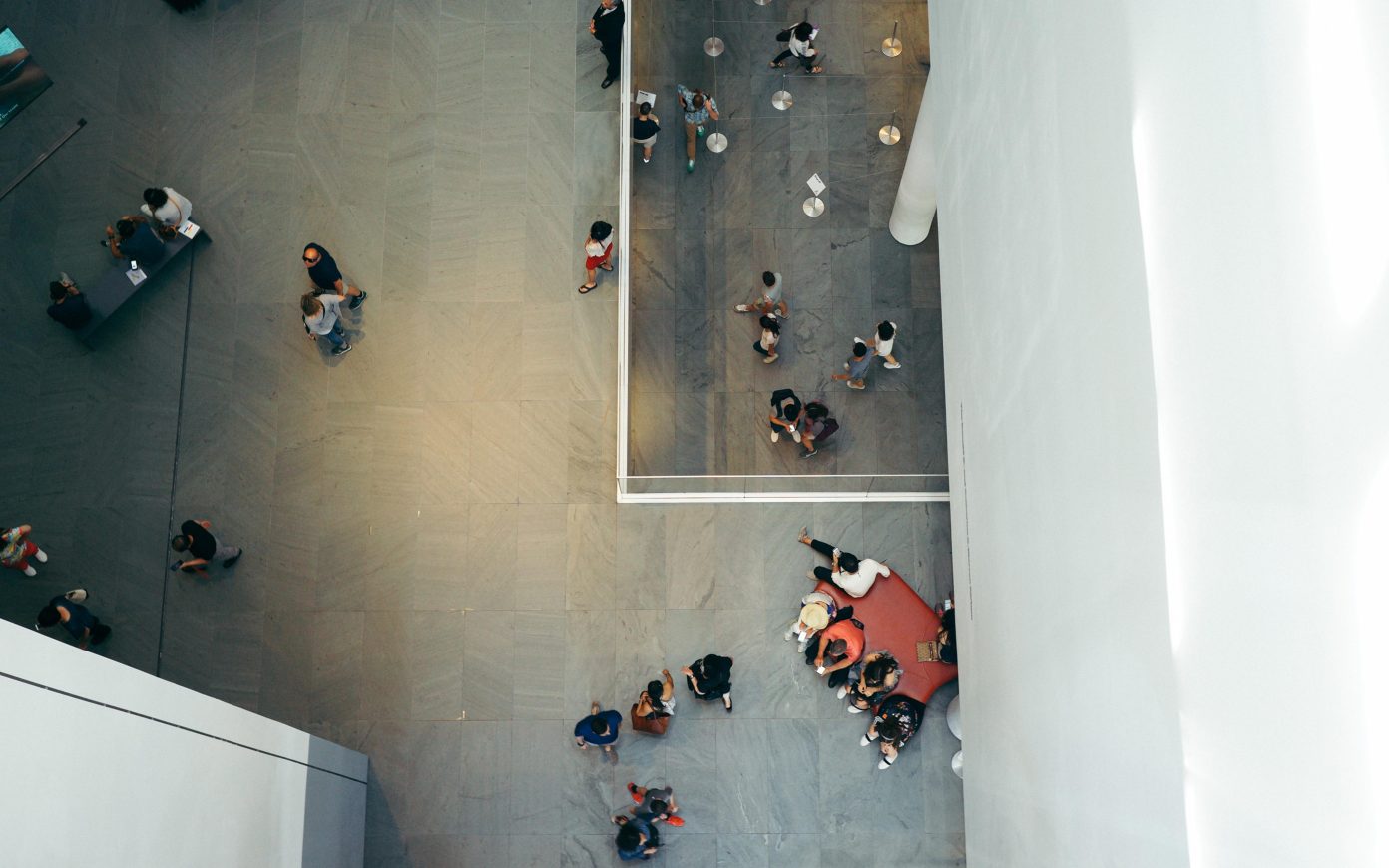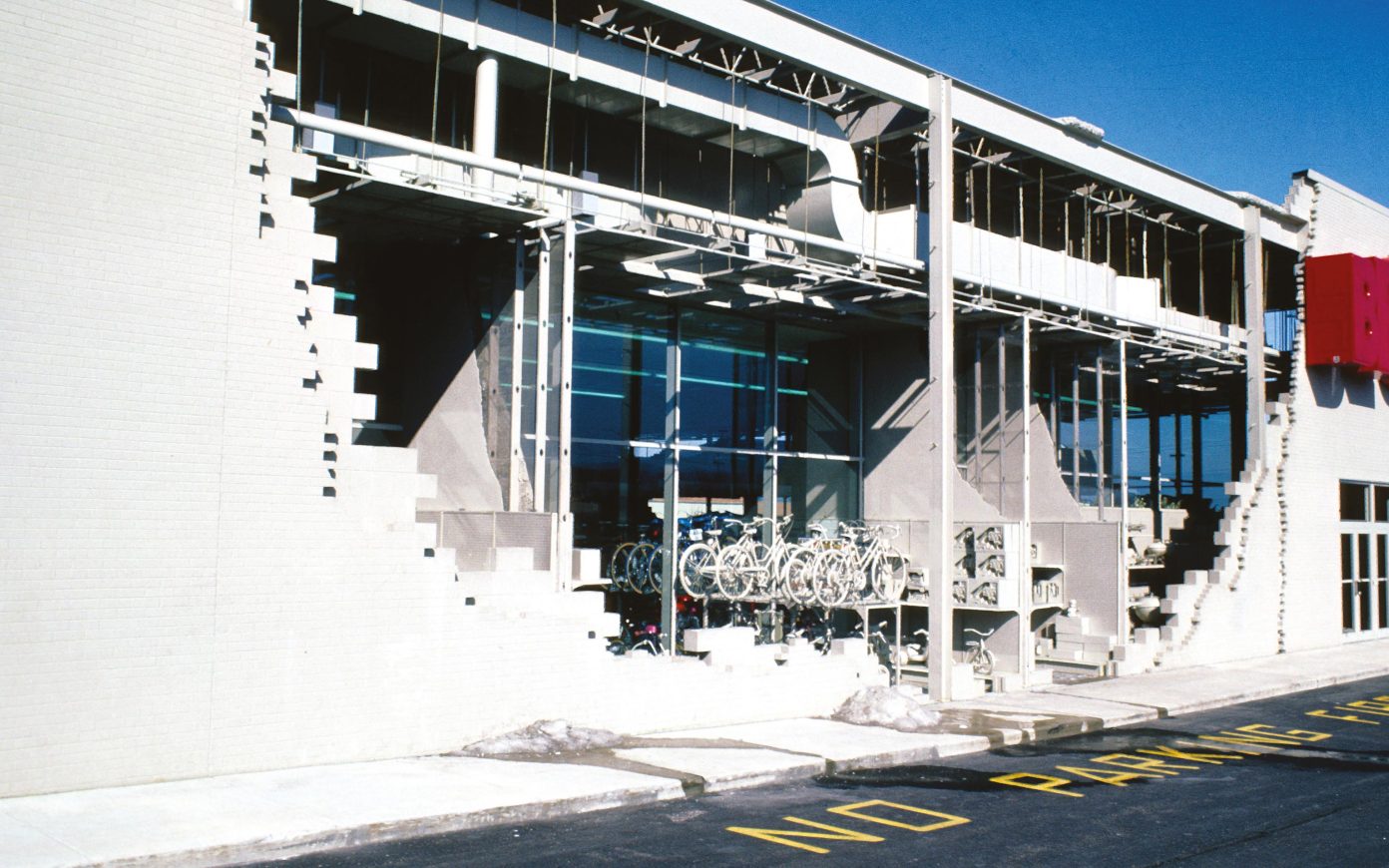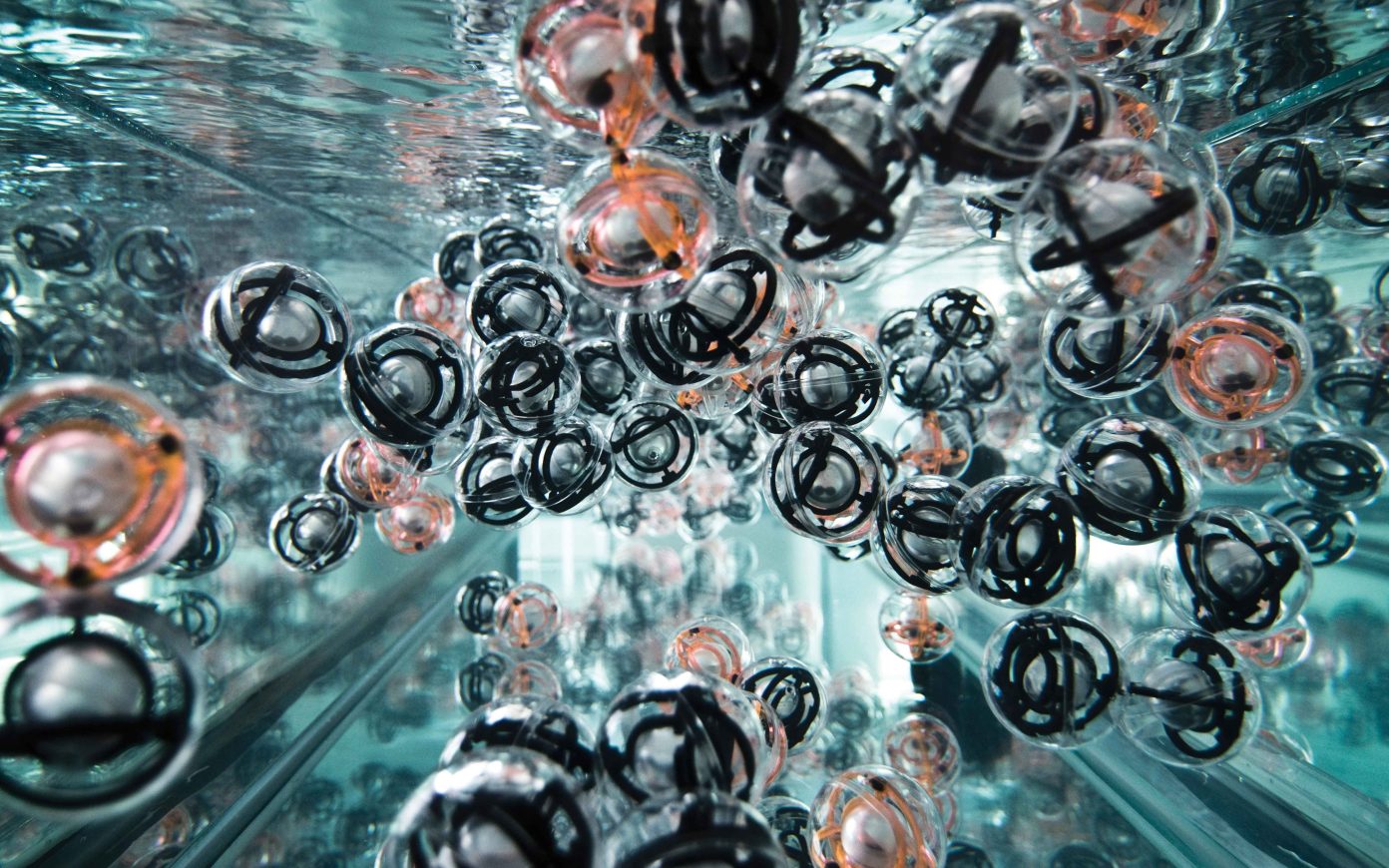Stream: For a dozen years now, your practice as an architect has also been leading you to work in the field of visual arts and not only in architecture. Your radical positions and your experimental approach in these two separate fields tend to negate the stereotypical image of conventional architects, and as a result you are viewed as an architect in the contemporary art world and as an artist among architects. Did you have to develop a strategy to convince property developers and project owners, as would be the case in any professional practice?
Ar(t)rchitecture
Didier Fiuza-Faustino: Architects receive their education and training in schools. Mine was a source of endless exhilaration. Upon graduation, you must get to work and start producing but I started thinking—trying to understand the reality of our situation and reflecting on what we had been taught.
Was I to become a product to be increasingly geared toward construction and architecture or could I find a way to earn money that could fund experiments and help me achieve a genuine exploration of the act of architecture?
It is not possible to handle two very different activities at the same time, that is to say experimentation/research and producing for someone else. I therefore decided to withdraw completely and created my own firm.
Moved by a desire for independence, I called it the Laboratoire d’Architecture Performance et Sabotage (LAPS – the Laboratory of Performance and Sabotage Architecture) and set up base in a small place on Place des Fêtes, in Paris. I then had neither good contacts nor any access to the inner circles of the industry, and therefore had no potential customers in view. So, I informed my architectural experiences with a simple material: the human body. I started to work on weightlessness and permeability, explored and documented as performances in the manner of the artist Bruce Nauman. We kept an eye on what was happening in contemporary art as some artists also worked on the theme of space and we were interested in their approach. I am often asked what relationship I have with contemporary art. For me, this isn’t an issue. Although we are not in the same economy, architects and artists position themselves in relation to society, they deal with the relationship between individuals, produce space and thought, an aesthetic. It is therefore quite natural that architects have a foothold in contemporary art.
What happened is that ArtPress, the contemporary art magazine, saw my work and wanted to write an article on the young, emerging architecture. The journalist got very interested in my work and eventually decided that he would devote a whole article to what I was doing. I had not yet realized many projects outside my syllabus. Bodybuilding was designed as a performance, where the body was used as a metaphor for the contemporary city. It featured on the front page of ArtPress.
That is how the key players in the art world begun to invite me to reflect on the question of the museum space. This led me to define a draft strategy around the act of “monstration,” and in particular that of architecture. Rather than try to play on the pretense of the restoration of the architectural work we had conducted, and given that I was in a process of construction and exploration, I offered to build fragments of architecture. The architect that I am has used the art world not to produce works of art, but to conduct architectural experiments. I worked one item after another: the wall, the floor, the ceiling; the ceiling that becomes a wall, chairs and so on. At the same time, I gave architectural competitions a try, especially in Portugal. Given that I am not only French but Portuguese, I am also a member of the Portuguese Order of Architects. One of my first was the competition for the Embassy of Portugal in Berlin. In that project, I tried to express the gist of my three years of experimentation, and reflected upon the program and its meanings. What does building an embassy in Europe mean today at a time were the abolition of borders is advocated? What does the construction of a territory in another territory mean? I therefore realized a hybrid building, a target for “pseudo-terrorists.” The project got noticed and I was invited to participate in the Venice Biennale of Architecture in 2000.
The question that then arose was to know what I was going to present, because the situation was reversed. I had indeed never participated in an architecture exhibition before. I continued in the same line and focused my reflection on the theme of the Biennale, which was “Less Aesthetics, More Ethics.” This made us identify a real problem: the issue of illegal migrants and border crossings. Much of our research was based on fragility, and in particular that of users faced with an almost dangerous architecture. The issue of the fragility of the bodies of illegal immigrants felt like an interesting idea to explore. I chanced upon an article that recounted the history of young Africans who hid as stowaways in the landing gear of planes, hoping to reach a better world. I therefore turned the principle on itself and proposed an architecture that was protective of the body, an envelope for illegal aliens. The very ethics of the project was soon raised—should we pursue this radical act of architecture to the end? The architect is supposed to be an instrument of power and structures controlled space; as for myself, I was proposing a way of circumventing the borders of this controlled space with Body in Transit. By presenting this project, I condemned the unacceptable situation of illegal migrants. In a similar approach, I refused to show an existing project for the exhibition of ArchiLab 2001, the theme of which was housing. I preferred to produce a piece of architecture in the form of a chair called Love Me Tender.
Stream: In fact, you strive to show the architecture in art, and the art in architecture!
Didier Fiuza-Faustino: Yes, it was perceived that way. But for me, it is the same process, since the very beginnings of the firm right up until our latest exhibition in Japan, for which I worked on regular office false ceilings. I do not see it a purely artistic production in the sense that this exhibition formed part of an architect’s approach. This isn’t a strategy in itself, but rather a system of cause and effect, where choices and opportunities are presented as is, without any premeditation. It is more of a survival strategy, a period of experimentation where I break free from the contingencies that every client-architect relationship entails. It is in this sense that I am perhaps closer to the process of artists given that I produce my own topics and programs. This period of experimentation and exploration seemed crucial to move on to the development of acts of architecture.
The Bureau des Mésarchitectures
Stream: After LAPS, your firm changed and became the “Bureau des Mésarchitectures” [Office of Misarchitectures]. What are “misarchitectures?”
Didier Fiuza-Faustino: By creating the Bureau des Mésarchitectures, we transitioned from adolescence to adulthood. We were talking about strategy earlier on. We try to anticipate what will happen next. Our positioning developed as a nebula, with one foot in the realm of art and the other in architecture, which gave us access to a new type of work. All our upstream activities made us to realize that we get the clients that we deserve. An increasing number of exceptional project owners come to find us. Even with local authorities or the fashion scene, with its unique economy, we manage to retain some degree of integrity thanks to this permanent need to experiment. I like the TV series X-Files, not for its production, but actually for the subtitle of its opening credits: “The truth is out there!” I often want to kick-start our discussions with new clients with the following assumption: what you ask will not necessarily match what you will get at the end. It is in some sense the anti-thesis of “WYSWYG” (What You See Is What You Get), that we translate in the Bureau des Mésarchitectures as “What You See Is Not What You Get!” That is the way we position ourselves and our customers are increasingly in capacity to take on the risk and to follow us. One of the latest examples is the project carried out for the Center of the Contemporary Art (CCA) of Kitakyushu in Japan; we were initially nowhere near to winning the contract. We deprogrammed the initial expectations of the client and this preliminary step that architects haven’t been doing for years now, this capacity to overthrow a program, to rethink it, was what guided our intervention. It is a quality that must be developed because for us, it is unthinkable to accept a ready-made program. Most of the time, programs are defined based on an existing one and a pretense of analysis, more than as something that must be conceived of in their singularity. Architects produce singularity however, and it is in this sense that the process of architectural creation converges with that of the artist.
Stream: What is your strategy for competitions?
Didier Fiuza-Faustino: Until now, we have had the chance to receive many requests for proposals. We take more interest in the topics than in the system of competitions itself. We found the theme of the competition for the Cité du Design (City of Design) of Saint-Étienne really fascinating and we were selected without any reference. We liked the hybrid and complex aspect of the program. It was utterly modern: a school, an art center, a museum, and a shopping arcade were to be developed. We are not satisfied with the materialization of the program and the story was not working, so we worked on an architecture of repetition, with no place for finiteness. An architecture that is frozen in time, but that could also be gangrened over time.
Stream: The lion’s share of your production is staged in the museum space, either by a specific direct intervention in the museum or else by the exhibition of collector’s “items” of experimental architecture. Can we speak of a strategy of exposure if we take into account the fact that museums have become inescapable and unifying monuments of the economy of modern cities?
Experimenting Architecture Through Art
Didier Fiuza-Faustino: The visibility strategy that you mention was not necessarily required at the start, but it provided the opportunity to do some building as our first customers were museums and art centers. But, as for the rest, I did not have a communication strategy, and I dare hope that the press coverage we got came from the interest that our projects generated. We have a web site that we haven’t updated in a year and that consists in a single video sequence entitled Under Discussion. Architects have fully understood that it was necessary to do some outreach regarding their projects, using their web sites, publications, and exhibitions. Here lies the true problem that exists between art and architecture. Architects have not assimilated the fact that art was a system of intellectual production for our discipline, and not a medium of communication. The purpose of art is not to promote the architectural firms. We operate in an adulterated system because of the misunderstanding of what the world of art actually is. After attending oral examinations in architecture schools, I realized that a majority of students believe that it is necessary to have a foothold in the art world because it is the best way to achieve an increased visibility and to quickly get noticed. It is a big mistake to think that because contemporary art makes it possible to experiment things that we do not have the time do in an architectural firm, where one is caught up in a process of design and construction. Personally, art is where I do my research and development.
Stream: So you explore concepts in architectural art?
Didier Fiuza-Faustino: Yes, but without relying on the economy of art: I am in an economy of architecture. This exploration was also made possible by a change of the types of contracts I get. Now curators have become clients of ours, sometimes so have the artists themselves; I employ the same methodology.
There remain some things that are left unsaid in the relationship with a private client. Private clients operate following a proximity principle: they identify someone or something that match their ideal and they convey it to you according to their own vision. Then begins a work of interpretation of this desire, of the program, understanding the people involved—it all takes a lot of time.
I often get asked how I make the firm profitable, and if art is the reason? This is not the case, even if in these particular projects, we sometimes push the client to their most extreme limits, even questioning their desires, and they sometimes abandon the project. Despite this, I feel more comfortable working for private clients, in the relationship that emerges with the client, that in public contracts where we never get to have a single contact point.
Embracing banality
For the project on the Rhine-Rhône Canal in Saint-Symphorien, we were invited to participate in a public architecture competition. Its aim was to completely revamp the entrance of the canal and the lockkeeper’s house. We went there and the whole team was enthralled by this kind of popular desolation that looked a little like the suburbs of our childhood. It was difficult then to imagine our intervention on such an intense site. We were facing a real issue, that of the modern cult of monuments and the problem of the very identification of monuments. We tried to identify the subject of the commission but could not draw anything. We then thought up a strategy for the project since any project for us, is a strategy per se. Much thought must be given to it, sometimes leading to questioning the specifications themselves, and it also necessary to have a goal. In the case of the Rhine-Rhône Canal, the objective was to know how to decide which architectural objects were deemed valuable. The decision to preserve this lockkeeper’s house came fairly quickly, its non-destruction then became the cornerstone of our proposal. What is plain and ordinary, devoid of quality, may well be something that must exist and must be preserved, and that it is only a matter of how it is interpreted. Museums and conservation have taken the place of religion in our society. Behind this stance was an idea that I liked very much, that of the “doppelgänger,” which means that each of us has a double that pursues us. This is why I called our project Doctor Jekyll and Mister Hyde.
The lockkeeper’s house in its current state faces its mutant, contemporary double—the two co-exist. We won the competition. The driver of the project will rest in the recognition and the acceptance of the architecture of the ordinary. The strategy adopted to win this competition was to never state clearly that we were going to keep the old lockkeeper’s house. In the images that we presented, this was just a blink of an eye. Our interlocutors did not feel concerned about our discourse and were primarily focused on the new house we were going to build. Our method was to bring together, on a regular basis, all the stakeholders of the project around a table and to talk, to get both the architects and the decision makers on the same level. For instance, I mentioned Steeve Austin, “The Six Million Dollar Man,” as a metaphor of the mutant body! In the afternoon, I drove the whole project team and the decision makers to community gardens in Dole. Looking at the small garden sheds bought in big-box home improvement stores, I wanted to defuse this form of agnosia and aggressiveness toward things that are an integral part of our daily lives. At the end of the day, we heard the decision makers express their regret regarding the fact that sheet metal wouldn’t be used, when the very same morning, they did not want to hear about it.
Naming to Become a Reality
Each project is in itself a fiction that can one day become reality; that is way I often name my projects after movies. I name the scenario.
In architecture, we are constantly justifying our choices, which is rather infuriating by the way. When you are a prescriber, there is a given time when you choose a shape, a color, a material, and you can explain and justify these choices with just any theory; it is first and foremost a personal choice and it must be accepted as such. By extension, I personally provide the keys in the titles that I select. In philosophy, this is called nominalism, the idea that a thing exists from the moment you name it. It is a fundamental concept for me.
To finish with the question of strategy, the firm has to this point never had an overarching development strategy, but has always used strategy in its projects. The firm’s mysterious names are actually more of a personal positioning: LAPS was a reference to the terrorist gangs of the 1970s. I liked the debate on the issue of acting out, the Baader-Meinhof Band, the Red Army Faction; we did not systematically condemn action, whether armed or not. We could explain it and especially talk about it. Today it is impossible: in architecture, it is time for acting out, for combat. With the Bureau des Mésarchitectures, we wished to develop, at the beginning, like Gordon Matta-Clark, the fact that architecture was not something that necessarily had to last. In his work, he revealed that the architect was not only the instrument of power nor he who materializes immortality.
Stream: But precisely, Gordon Matta-Clark became an artist, and architects still build monuments. Because as you said earlier, architects are an instrument of power even if you are in the position of the king’s jester.
Didier Fiuza-Faustino: I think that the architect should engage in exploration in order to generate new negotiation protocols with the centers of power and big capital interests, even if means taking the risk of no longer being an architect.
Article published in Stream 01 in 2008.
